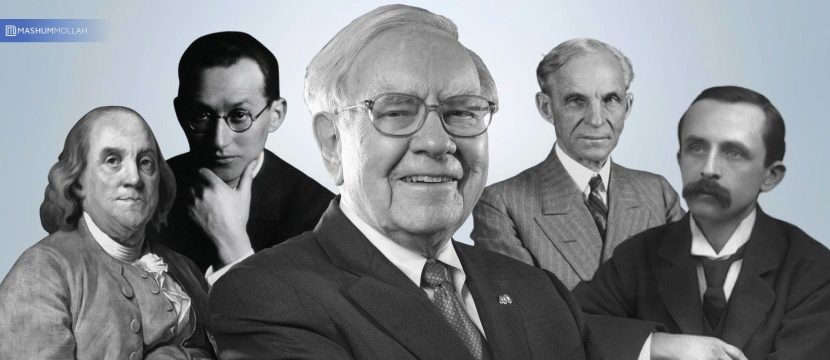Leadership, Leadership Style
What Is Laissez Faire Leadership Style? Definition, Example Pros And, Cons

If you pick the right people and give them the opportunity to spread their wings, and put compensation as a carrier behind it, you almost don’t have to manage them.”
– Jack Welch
Can you imagine an organization where the leaders don’t interfere a lot with the organization’s work process? In such an organization, most of the decisions are taken by the team members. This leadership style is called the Laissez Faire leadership style.
The Laissez Faire leadership style is an interesting leadership model unlike any other we have discussed so far. Employees have greater job satisfaction working in an organization that follows this leadership style. However, these organizations have the lowest productivity level according to statistics.
In this article, I will help you understand about Laissez Faire leadership style and discuss its various merits and flaws. So, let us begin.
What Is Laissez Faire Leadership Style?

The definition of Laissez Faire leadership comes from the French word it takes its name after. Laissez Faire is a French word; it means “let it be” or “leave it alone .”Organizations rely on their employees and allow them to work independently and make creative decisions.
These leaders don’t offer excessive guidance and instructions to their employees; and the leadership style completely shakes off micromanagement offering the employees the best level of job satisfaction. Individuals who are Forward-thinking, resourceful and intelligent have a place in a workspace governed under Laissez Faire leadership.
Leaders following this leadership style are more aloof in nature and leave all the decision-making power to the employees in the organization. However, they assess the individual talents of different workers. Laissez fair leaders are completely different from a directive or autocratic leaders.
Background/History Of Laissez Faire Leadership Style

Laissez Faire leadership style has both flaws and merits. Indeed employees enjoy better mental health conditions working in organizations following such leadership. However, on the negative side, the organization may suffer from a low level of productivity.
Kurt Lewin, one of many early contributors to the study of social psychology, is said to be the proponent of the Laissez Faire leadership style. His research is widely followed by human resource experts for increasing workplace productivity and assessing employees.
Although Lewin is credited with propagating this leadership style, he did not mention it as his preferred one. However, Lewin, Ralph K. White, and Ronald Lippitt identified this leadership style in his 1930 work “Leadership and Group Life.”
This leadership style is an antithesis of centralized leadership styles like the bureaucratic leadership style. Managers need not put exhausting effort into managing the organization under this leadership style.
You May Like To Know About Coaching Leadership Style
Characteristics Of Laissez Faire Leadership Style
The involvement of the employers mostly characterizes this leadership style. Employees have the employers’ trust; the power to make decisions is also crucial nature of this leadership style. Here is a detailed breakdown of the different characteristics of this leadership style.
1. Hands-Off Approach

Laissez Faire leaders rely on resourceful, intelligent, and forward-thinking people. They allow them to work independently and work towards their goal. These leaders depend on their skills and problem-solving skills. They don’t involve themselves in the operations running the organization and keep away from giving any instructions. That is why it is called a hand-off approach.
2. Training, Courses, & Support

Laissez Faire leaders believe in and rely on the dependable skills of the employees. They rely on the educational background of the employees and often offer adequate support, training, and opportunities to the employees. These leaders care for the level-best performance of the employees. As a result, they are ready to offer whatever resources employees need to get the job done.
3. Trust Towards Employees

Laissez Faire leaders can remain uninvolved in the organization and keep their aloofness because of their trust in their employees. They trust the education, skills, and forward-thinking mindset their employees possess. These leaders love to leverage the skills, personal goals, and directions of the employees; that is why they hire the best employees and trust them. These leaders only hire people who have no intention to cause harm to the company’s reputation; and those who will take the business only in the right direction.
4. Employees Take Decisions

In the democratic leadership style, the employees can take part in decision-making and share their opinion. Laissez Faire leadership takes that approach one step further and hands the decision-making power to the employee.
5. Accepting Mistakes

Workers under this leadership style can use their innovative ideas without any worry. The Laissez Faire leaders are open to accepting any mistake made with the intention of reaching a goal. Therefore, instead of being nervous about getting everything right, employees can focus on developing and learning.
Laissez Faire Leadership Style: What’s Good…And What’s Not So Good?
An ideal leadership is not a specific leadership style that a leader follows. Instead, it is a mix of different leadership styles adopted effectively within an organization. Smart leaders are quick to find out the benefits of a leadership style and negate its negative sides of it.
The Benefits Of Laissez Faire Leadership Style: Pros

- Organizations following Laissez Faire leadership have higher employee retention. A good workplace environment created by this leadership style is the reason behind it.
- Employees show more accountability in their work. They want to ensure that they are doing their best and giving their best.
- The leaders don’t give too many instructions. As a result, the work culture is more relaxed than the other organizations following a different leadership style.
- Workers can independently experiment and be creative about their endeavors. Creativity thrives in this type of organization.
- Employees under such an organization feel free and are motivated and driven by their own thoughts and creative passion.
The Disadvantages Of Laissez Faire Leadership Style: Cons

- Organizations following Laissez Faire leadership require independent thinkers who don’t need much guidance. So, such workplaces become tough for new recruits who need direction and guidance to fit right in.
- There is no chain of command like the bureaucratic leadership style in the Laissez Faire style of leadership. That is why it becomes hard to understand who is in charge.
- There is a lack of support and structure when all the employees think and work independently on their own accord.
- This leadership style is based upon the individualistic efforts of the employees. Sometimes it may become adverse for groups to work properly.
- Leaders remain uninvolved, which may cause a lack of responsibility among employees. Sometimes employees need someone to steer them; without a leader to guide them, their productivity level may decrease.
Laissez Faire Leadership Style: Case Studies (Examples)
Laissez Faire leaders are characterized mainly by their involvement in the organization. Here are two case studies of two popular business persons who show facets of this leadership style in the way they operate or run an organization—
Case Study 1: Herbert Hoover

Herbert Hoover, the 31st president of the U.S., displayed a Laissez Faire approach in his way of leading the country and politics. Throughout his time, he has trusted his team of people and their skills and experiences. And his leadership style got him through successfully as a leader and a president.
Case Study 2: Warren Buffett

Warren Buffet is famous for his investment portfolio and his success as an investor. Moreover, he has characterized himself with a Laissez Faire approach in handling his companies. He surrounds himself with people who he can trust.
He trusts these individuals so that they can accomplish their tasks without him worrying about them. Buffet does not intervene unless it is extremely important. He offers his subordinates the liberty to make mistakes and learn from them.
I think you have a better idea of this leadership style after reading about Laissez Faire leadership style examples. But how to become a leader who follows this leadership style?
How To Become A Laissez Faire Leader?
Employers should concern themselves with the mental health of the employees. Perhaps, it is the noble reason forcing them to resort to a Laissez Faire style of leadership.
However, it should be balanced and implemented to a certain limit for an efficient workplace that also promotes good mental health. Here are some steps you can take to improve your workplace using Laissez Faire leadership.
1. Assess Employee Performance

Yes, you need to perform a hands-off approach while following this leadership style. But, you should keep assessing employee performance to ensure that the graph of your business is growing upwards. Performance check of the employees also lets leaders keep track of what’s going on inside the organization.
2. Point Out Problems

A hands-off approach does not mean you have to let all the problems slide. The problems can be related to the health of the business or issues employees are facing. As a leader, you should take the responsibility to address them and solve them.
3. Offer Feedback

Laissez Faire leaders can also offer feedbacks. Assessing employee performance should not be the end of their involvement in the organization. They should also offer feedback individually to the employees to ensure that they don’t lack motivation.
4. Involve Into The Organization

Laissez Faire leadership is an employee-driven leadership style. Its key intention is to offer a better workspace for the employees to work better. However, that should not keep the leaders completely away from the organization. Employers should involve themselves to a degree to improve organizational growth while also not hindering the independence of the workers.
Frequently Asked Questions (FAQs):
Here are some popular questions and answers you may need to read –
Laissez Faire leadership style is effective in organizations with skilled employees. When the employees are aware of their responsibilities and are motivated by their own capabilities, this leadership style proves effective. The group members under this leadership style are resourceful, dependable, confident, and dependable.
Laissez Faire leadership takes its name from the French word Laissez Faire, which means “let it be” “or leave it be .”The word implies a hands-off approach to management.
Most developed nations have abandoned the strict adherence to this leadership style. However, a mix of Laissez Faire in different workplaces is still visible alongside other leadership styles.
Is Laissez Faire Effective?
The effectiveness of the Laissez Faire leadership style depends upon the leader adopting it. Complete aloofness about the operation within a business does not have entirely positive outcomes. That is why – even a Laissez Faire leadership style is not fully reliable.
Complete adherence to this leadership may offer a better work culture, but the organization’s productivity may decrease significantly.
It is better to adopt the positive sides of this leadership style. However, a completely hands-off approach is never beneficial for an organization. I think you got a complete explanation of this leadership style through the present article. If you have further queries, leave some questions in the comment.
Read Also: